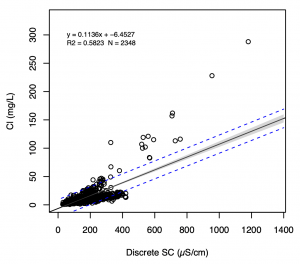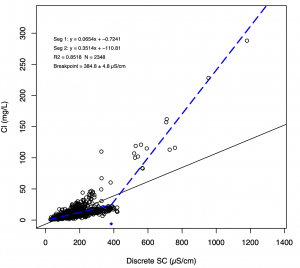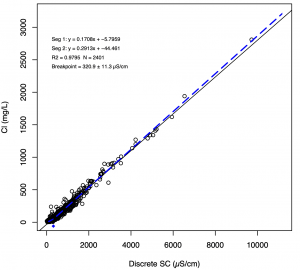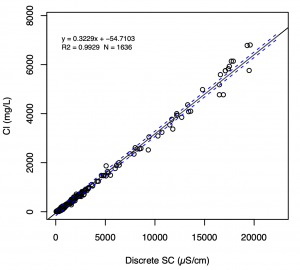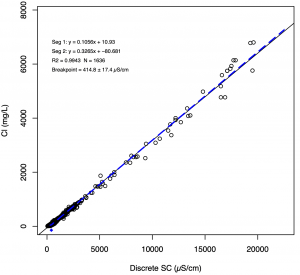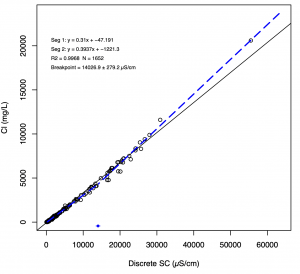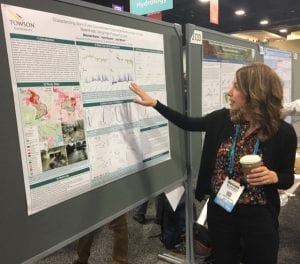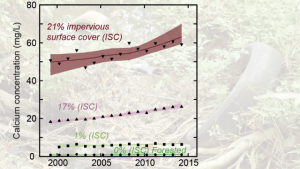Patrick McMahon (ENVS M.S. ’20) is first author on a just-published Environmental Research Letters paper with several TU co-authors including other ENVS M.S. students about the effects of stream restoration (via the legacy sediment removal & floodplain reconnection approaches) on water quality at six restored reaches in Baltimore and Harford Counties in Maryland.
The paper is part of a Focus Issue on Legacy Effects of Land use and Management on Water Quality and Ecosystem Function that was edited by Nandita Basu, Kimberly Van Meter, Shree Inamdar, Elena Bennett, Emily Bernhardt, and Michelle McCrackin.
P. McMahon, V. B. Beauchamp, R. E. Casey, C. J. Salice, K. Bucher, M. Marsh, and J. Moore (2021) Effects of stream restoration by legacy sediment removal and floodplain reconnection on water quality. Environmental Research Letters. 16: 035009.
https://iopscience.iop.org/article/10.1088/1748-9326/abe007
Abstract
The effectiveness of many stream restorations in improving water quality is unmeasured. In the Mid-Atlantic region of the United States, activity by European settlers resulted in upland erosion and deposition of sediments 1–3 m in thickness in stream valleys. Subsequently, streams incised those legacy sediments creating steep, exposed banks, infrequent floodplain inundation, and water tables disconnected from floodplains. Legacy sediment removal (LSR) and floodplain reconnection (FR) proposes water quality improvement by restoration to a hydrological state closer to pre-European. We investigated water quality at nine sites, six restored with LSR/FR and three comparison sites. Nitrogen baseflow concentrations and fluxes were elevated in urban and agricultural watersheds with little apparent effect due to restoration. Denitrification appeared to be constrained by carbon availability. Ion concentrations were elevated in all watersheds compared to a forested reference and represent a substantial ecological stressor for the post-restoration aquatic community. Storm event data from one site suggest small reductions in nutrient and sediment loads across the restored reach. High-frequency time series indicate that restoration effects are not observable at larger scales. The effects of restoration, particularly for denitrification, may not be observable for years and can be obscured by weather and climate-driven variability.

